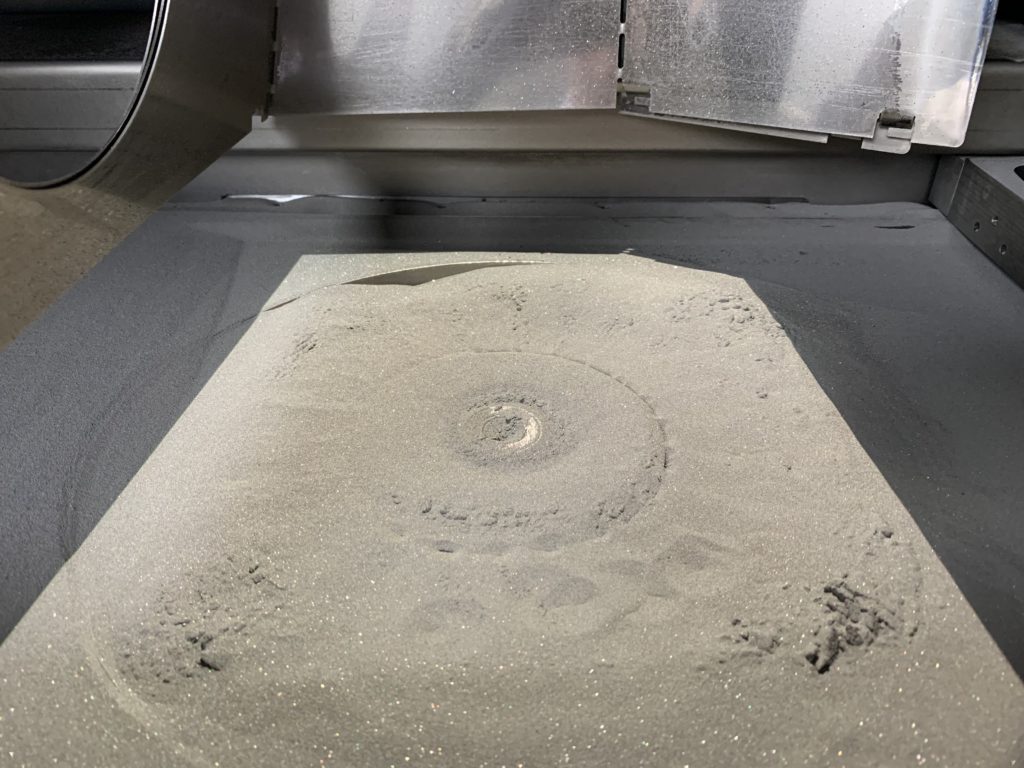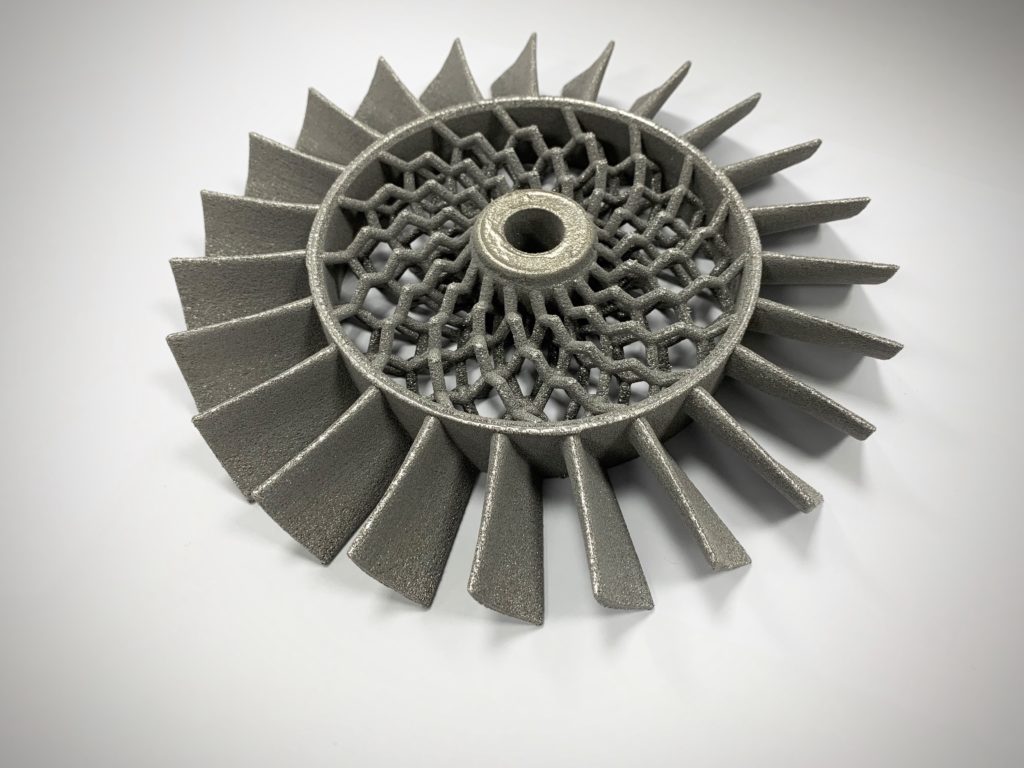After several years of research and development, Wayland Additive is now showcasing its new electron beam powder bed fusion (PBF) process dubbed NeuBeam. The U.K. company claims that its tech has numerous advantages over other metal PBF processes, including both laser PBF and other electron beam systems.
The company was spun out of Reliance Precision, a roughly 100-year-old engineering firm that relied on a series of Innovate UK grants to develop a new form of electron beam PBF based on processes related to electron microscopy and electron beam lithography. Licensing the technology from Reliance, Wayland is now in the process of commercializing its NeuBeam technology with the goal of delivering machines to six customers by 2021.

Parts printed by NeuBeam, without the formation of a “sinter cake”. Image courtesy of Wayland Additive.
Wayland CEO Will Richardson suggests that, using principles developed from the semi-conductor industry, NeuBeam is able to neutralize the charge accumulation that occurs with traditional electron beam PBF (hence the “neu” in NeuBeam), thus broadening the printing parameters of the system. The result is greater stability for electron beam PBF overall and opening up more flexibility than found with laser PBF. In turn, a wider range of materials can be used with NeuBeam than with other PBF processes.
Richardson describes NeuBeam as “a hot part process rather than a hot bed process,” in that heat is applied only to the part being printed and not to the whole bed. Instead of generating a “sinter cake” associated with electron beam PBF processes, Wayland’s technology allows for the free flowing of powder once the build is complete, reducing the amount of post-processing required, reduced energy consumption and, the company claims, parts free from residual stress. By eliminating thermal stresses, as well as gas crossflow, and by simplifying powder removal, Wayland suggests that much larger parts can be made than with traditional electron beam technology.
As a newer metal PBF company, Wayland Additive has jumped ahead of the stalwarts of the industry by introducing real-time in-process monitoring from the start, using structured light scanning, electron imaging and high speed infra-red cameras. This can be used to adapt the system during the printing process to tune microstructures as the part is being built. This also aids in material development, as the parameters can be changed on the fly for metal-specific optimization.
Electron beam PBF has been primed for new advancements for some time, with very few competitors in the field. The primary manufacturer of electron beam PBF systems is Arcam, now a subsidiary of GE Additive, whose electron beam melting (EBM) technology has been the standard bearer for electron beam PBF since the company first began selling systems in 2001.
However, the technology has been limited due to the reasons mentioned above and more. The charge accumulation that NeuBeam addresses, for instance, causes powder scattering and “smoke events” that distort printed layers when they occur and thus damage the entire part. Breaking up the layer cake and removing unused powder is an arduous process that necessitates the use of coarse materials to limit the risk of explosion when bead blasting parts. All of this limits the metals that can beeasily printed with the technology, mostly titanium alloys and cobalt chrome. In turn, Arcam itself has targeted just two industries with EBM, aerospace and medical implants.
More recently, however, new entrants like Wayland Additive are beginning to offer alternatives. In addition to a Chinese company called Xi’an Sailong Metals, JEOL , a Japanese maker of electron-beam based metrology and inspection technologies, is working with the Japanese Technology Research Association for Future Additive Manufacturing to develop an electron beam process.
This will certainly make the electron beam PBF market more interesting and will likely provide further competition for laser PBF companies that dominate the market, like EOS. And, because Wayland has reportedly developed methods for overcoming EBM’s drawbacks, there’s no doubt that GE is attempting to do the same.
The post NeuBeam: New Electron Beam Metal 3D Printing Emerges appeared first on 3DPrint.com | The Voice of 3D Printing / Additive Manufacturing.

